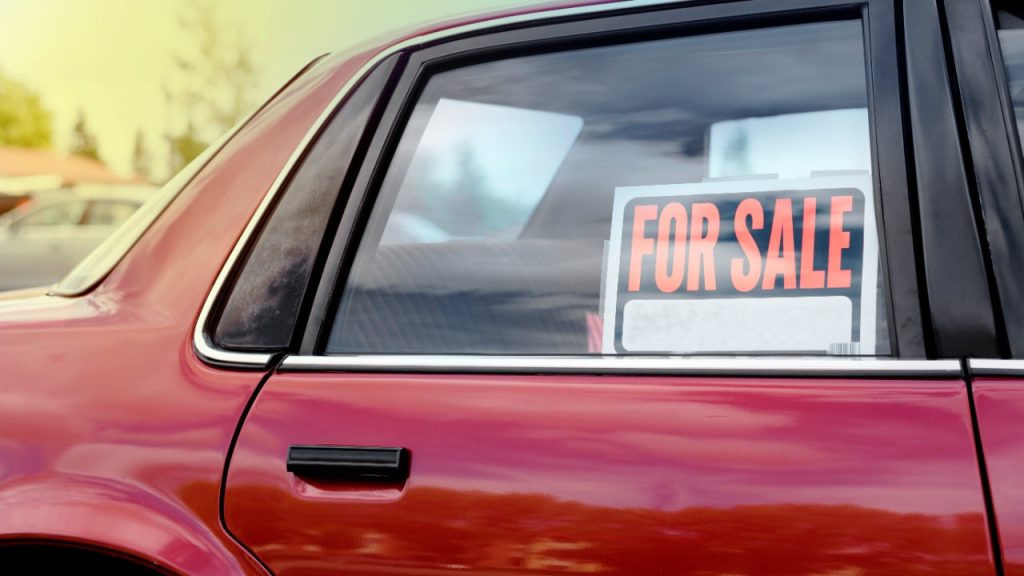Key takeaways
- Used vehicle supply is down compared to the same time last year.
- Options for selling your car include selling it privately, trading it in for another vehicle, or selling at a dealership or car-buying site.
- To get the best price for your used car, get your vehicle in tip-top shape before selling.
The used vehicle market continues to be impacted by limited inventory, which is down year-over-year as of October. The supply of unsold used vehicles on U.S. dealer lots across the United States is down 4 percent compared to the same month last year, according to Cox Automotive.
With dealers currently short on stock and signs indicating that used car prices will decrease soon despite this fact, now may be a great time to sell your car. But with new car prices lingering far higher than pre-pandemic costs and cheap older cars in short supply, finding an affordable replacement may be tricky.
Used car market trends: Should I sell my car?
The current used market trends favor the seller. Used vehicle inventory volume and day’s supply are tighter this year than last October, according to Cox Automotive data. With less supply available, down from September, dealerships may be eager to get their hands on your vehicle.
“Supply is more constrained at lower price points. Used cars below $15,000 continue to show low availability,” Cox Automotive writes.
According to Kelley Blue Book, dealers tend to aim for a 60-day supply on their lots, meaning they’d have enough cars to sell for 60 days without restocking. But they currently average a mere 47 days. Vehicles under $15,000 are even harder to come by, with just a 33-day supply.
Limited supply has impacted vehicle prices only slightly. The average listing price for a used car was $25,361 at the beginning of October, according to Cox Automotive, up from the September price of $25,135.
There are also signs that prices will trend downward over the coming months. The prices dealers pay for vehicles at wholesale auctions suggest the direction the market may be headed, according to Kelley Blue Book.
“A wholesale price change usually leads to a retail price change about six to eight weeks later,” writes KBB’s Sean Tucker. “In recent months, we’ve watched wholesale prices rise slowly, and, sure enough, list prices have followed. But there may be an end in sight. That trend has reversed.”
According to KBB, the wholesale price index fell by 0.2 percent during the first 15 days of September and is down a full 5 percent from September of last year.
Options for selling your car
The best choice for you will depend on the amount of time you have available and your need for another vehicle.
Sell privately
Selling your vehicle privately usually means a higher payoff, direct negotiation and the ability to avoid any dealer costs. But a private sale does take some extra work.
The best place to start is online. Sites like Kelley Blue Book, Edmunds and AutoTrader can help you estimate your market value using search parameters, including make and model, mileage, condition and location.
Other options for selling privately include local advertisements or Facebook Marketplace. But sticking to a trusted website helps weed out scammers.
Trade in your vehicle
If you want another vehicle, a trade is an efficient way to sell your current car and drive off with a new one. Your local dealership can usually accept a vehicle trade-in. It’s a relatively simple process.
Be sure to fix known mechanical problems (if possible), clean up your ride and negotiate the trade-in value separately to get a fair price.
After paying off your current vehicle, you can take the remaining profit out of your new vehicle price. Rather than getting cash — like you would selling privately — you will instead lower the price tag on your new car. But new cars are going for a premium, so it might not go as far as you would like.
Sell at a dealership
Like trading in your vehicle, selling at a dealership can be one of the easiest ways to get rid of your car. The dealership will handle most of the hassle of selling the vehicle. But with that convenience comes a lower payout than you could get if you sold the car on your own.
With the current car market, dealerships are more likely to be open to taking the used vehicle off your hands. But be sure to shop your car around and get a few offers before agreeing to one so you know you are getting the best deal.
Sell to a car-buying website
You could also use a car-buying website, like AutoNation or Shift, to get a cash offer for your car. You’ll need to provide the make, model, color and mileage of your car, along with the vehicle identification number (VIN). The online questionnaire will also request information about the history and condition of your vehicle and if you own it outright or are still making payments.
You may also need to upload images of the car before the site makes an offer.
If an offer is available, you’ll generally have anywhere from 24 hours to seven days and 500 miles to accept it. Some car-buying websites will pick up your car, but others require you to drop it off at a partnering dealership.
While this is a convenient option to get your car off your hands, be mindful that a service fee that eats into your profits may apply.
Paperwork needed to sell your car
You will need to organize a few items before selling your vehicle. Early preparation will mean you aren’t scrambling to find the necessary forms after finding a buyer.
- Vehicle title
- Bill of sale
- Loan information, if applicable
- Repair and maintenance records
Tips for selling your car privately
A used car that smells brand new may be more likely to sell. Consider these tips to help you get the most out of the vehicle you are selling.
- Pay off your current loan. Before your next vehicle purchase, ensure your loan is fully paid off. Selling a vehicle that still has a lien on it is a complicated process.
- Know your vehicle’s worth. Research can help ensure you get the maximum amount possible from a private sale or at a dealership. Take advantage of Kelley Blue Book’s car value option and research what vehicles similar to yours have been selling for in your area.
- Get a pre-sale inspection. Potential buyers may request a pre-sale inspection before agreeing to buy your car. It involves having their mechanic inspect the vehicle. If you agree, meet up with the interested party and their mechanic in a safe location.
- Don’t forget curb appeal. Consider whether your car could use cosmetic fixes, minor repairs or detailing before potential buyers see it. Commit to spending more money to clean up the car as best you can.
- Make ads that pop. Once your car is detailed, get good photos. This is especially important if you’re selling online. Cover every possible angle, inside and out. Part of buying a car online is avoiding scams, and a well-photographed car looks more legitimate.
- Keep the sale safe. If you choose to sell privately, meet in a public space, keep track of the paperwork, and be methodical about each step, including exact mileage. Consider a cashier’s check or big-name online payment processing service for the safest payment.
- Close the deal properly. When you’re ready to close the deal, you’ll have several legal and administrative details to complete. After the sale, contact your insurance company to have it removed from the policy, but not before you’ve notified your Department of Motor Vehicles of the sale.
Next steps
The choice to sell or trade in your current ride should center around your needs, not just current used market conditions. But if the move feels right, consider which option fits best. What’s best for you depends on how much time you can dedicate and what you are looking to get out of the sale.
Read the full article here
















